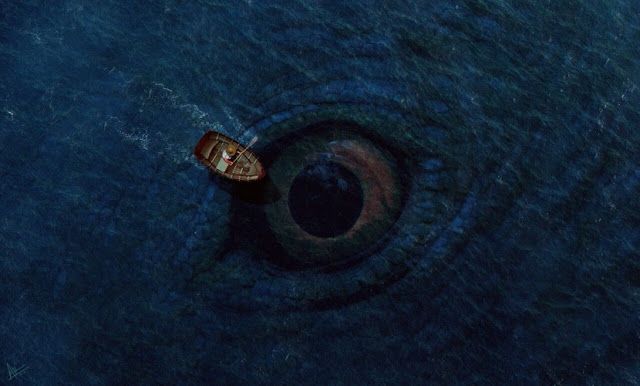THALASSOPHOBIA: THE FEAR THAT FREEZES YOU

Fear of the Sea: A Deep Exploration
The fear of the sea, or thalassophobia, is a phenomenon that affects people worldwide, manifesting in varying degrees of intensity. This fear can range from mild anxiety when contemplating the vast ocean to paralyzing panic that prevents any interaction with the water. Understanding the roots of this fear is essential to addressing and overcoming it. Below, we delve deeply into the reasons why we fear the sea.
1. The Unknown Abyss
The ocean is the largest and least explored habitat on our planet. Only a small fraction of the ocean floor has been accurately mapped, leaving a vast area shrouded in mystery. The idea of the unknown can be terrifying for many people. The depths of the sea harbor creatures and landscapes that defy our understanding and control, triggering an innate fear of what we cannot see or predict.
2. Psychological Trauma
Traumatic experiences related to water, such as near-drownings, encounters with dangerous marine animals, or witnessing maritime tragedies, can leave deep psychological scars. These events can trigger an automatic fear response when facing water again. Even hearing others' accounts of traumatic experiences can negatively influence our perception of the sea.
3. Cultural and Media Representations
Culture and media play a significant role in shaping our fears. Movies like "Jaws," documentaries on maritime disasters, and narratives about sea monsters contribute to an image of the sea as a place full of dangers. While these stories often exaggerate the risks, their emotional impact can be profound and lasting, feeding a negative perception of the ocean.
4. Lack of Skill and Knowledge
The inability to swim or lack of familiarity with survival techniques in the water is a common cause of thalassophobia. People who cannot swim or do not feel confident in the water may experience a great sense of vulnerability and lack of control, which can trigger fear and anxiety. Additionally, not knowing how to behave in the sea, interpret currents, or recognize danger signs can increase this fear.
5. Real and Perceptible Threats
The sea presents tangible dangers that justify a certain degree of caution. Underwater currents, treacherous waves, dangerous marine animals like jellyfish and sharks, and adverse weather conditions are real risks that can cause serious injury or death. Awareness of these dangers, while necessary for safety, can also heighten the fear of the sea.
6. Evolutionary Instincts
From an evolutionary perspective, fear of the sea may be rooted in our biology. Humans are not adapted to live in water, and our survival depends on dry land. This fear can be a manifestation of a survival instinct, warning us against environments where our ability to protect ourselves is limited. The lack of control and the perception of being out of our natural element can activate fear responses as a protective mechanism.
7. Unpredictability and Lack of Control
The sea is a dynamic and ever-changing environment. Water conditions can vary rapidly due to meteorological and oceanic factors. The unpredictability of currents, tides, and waves can make the sea seem like a chaotic and hard-to-master place. This lack of control and predictability can be a significant source of anxiety for many people.
Overcoming the Fear of the Sea
For those who wish to face and overcome their fear of the sea, several strategies can be effective:
Education and Training: Learning to swim and becoming familiar with water safety techniques can significantly boost confidence. Participating in diving or rescue courses can provide the skills necessary to handle situations in the water.
Gradual Exposure: Gradually facing the fear can be an effective technique. Starting with water activities in controlled environments, such as pools, and then progressing to the sea can help desensitize the fear.
Psychological Therapy: Cognitive-behavioral therapy (CBT) can be particularly useful for treating specific phobias like thalassophobia. A therapist can help identify and change negative thought patterns associated with the sea.
Relaxation and Breathing Techniques: Practicing breathing and relaxation techniques can help manage anxiety. Meditation, yoga, and deep breathing can be useful for reducing panic in stressful situations.
Companionship and Support: Diving or swimming in the company of friends or experienced guides can provide a sense of security. Having the support of others can make the experience less intimidating.
The fear of the sea, or thalassophobia, is a phenomenon that affects people worldwide, manifesting in varying degrees of intensity. This fear can range from mild anxiety when contemplating the vast ocean to paralyzing panic that prevents any interaction with the water. Understanding the roots of this fear is essential to addressing and overcoming it. Below, we delve deeply into the reasons why we fear the sea.
1. The Unknown Abyss
The ocean is the largest and least explored habitat on our planet. Only a small fraction of the ocean floor has been accurately mapped, leaving a vast area shrouded in mystery. The idea of the unknown can be terrifying for many people. The depths of the sea harbor creatures and landscapes that defy our understanding and control, triggering an innate fear of what we cannot see or predict.
2. Psychological Trauma
Traumatic experiences related to water, such as near-drownings, encounters with dangerous marine animals, or witnessing maritime tragedies, can leave deep psychological scars. These events can trigger an automatic fear response when facing water again. Even hearing others' accounts of traumatic experiences can negatively influence our perception of the sea.
3. Cultural and Media Representations
Culture and media play a significant role in shaping our fears. Movies like "Jaws," documentaries on maritime disasters, and narratives about sea monsters contribute to an image of the sea as a place full of dangers. While these stories often exaggerate the risks, their emotional impact can be profound and lasting, feeding a negative perception of the ocean.
4. Lack of Skill and Knowledge
The inability to swim or lack of familiarity with survival techniques in the water is a common cause of thalassophobia. People who cannot swim or do not feel confident in the water may experience a great sense of vulnerability and lack of control, which can trigger fear and anxiety. Additionally, not knowing how to behave in the sea, interpret currents, or recognize danger signs can increase this fear.
5. Real and Perceptible Threats
The sea presents tangible dangers that justify a certain degree of caution. Underwater currents, treacherous waves, dangerous marine animals like jellyfish and sharks, and adverse weather conditions are real risks that can cause serious injury or death. Awareness of these dangers, while necessary for safety, can also heighten the fear of the sea.
6. Evolutionary Instincts
From an evolutionary perspective, fear of the sea may be rooted in our biology. Humans are not adapted to live in water, and our survival depends on dry land. This fear can be a manifestation of a survival instinct, warning us against environments where our ability to protect ourselves is limited. The lack of control and the perception of being out of our natural element can activate fear responses as a protective mechanism.
7. Unpredictability and Lack of Control
The sea is a dynamic and ever-changing environment. Water conditions can vary rapidly due to meteorological and oceanic factors. The unpredictability of currents, tides, and waves can make the sea seem like a chaotic and hard-to-master place. This lack of control and predictability can be a significant source of anxiety for many people.
Overcoming the Fear of the Sea
For those who wish to face and overcome their fear of the sea, several strategies can be effective:
Education and Training: Learning to swim and becoming familiar with water safety techniques can significantly boost confidence. Participating in diving or rescue courses can provide the skills necessary to handle situations in the water.
Gradual Exposure: Gradually facing the fear can be an effective technique. Starting with water activities in controlled environments, such as pools, and then progressing to the sea can help desensitize the fear.
Psychological Therapy: Cognitive-behavioral therapy (CBT) can be particularly useful for treating specific phobias like thalassophobia. A therapist can help identify and change negative thought patterns associated with the sea.
Relaxation and Breathing Techniques: Practicing breathing and relaxation techniques can help manage anxiety. Meditation, yoga, and deep breathing can be useful for reducing panic in stressful situations.
Companionship and Support: Diving or swimming in the company of friends or experienced guides can provide a sense of security. Having the support of others can make the experience less intimidating.
